What plants can and better be placed next to marigolds?
For most vegetable and horticultural plants landing compatibility is the key to a rich harvest. If you know what to plant next to marigolds, you can get a good harvest of the grown plants. This flower has a unique property - crops that grow next to it are not attacked by pests and do not get sick.
A few words about flowers
Chernobrivtsi, marigolds, aksamitki, tagetes, Turkish carnation - these are all the names of one not only beautiful and unpretentious flower in growing, but also an excellent protector of many garden and vegetable garden plants.
Marigolds are an annual and perennial representative of the Asteraceae family. Initially, it only grew in areas from Arizona and New Mexico to Argentina. It was only in the 16th century that he first came from there to Spain, and then settled throughout Europe and Asia.
59 of its species are known. Their color palette is amazing in its variety. The flowers range in color from dark orange and wine to lemon. Some species have colors mixed in several shades.
Their main application is landscape design. But in many countries they are used as a seasoning for fish and meat dishes, added to salads, sauces. The healing properties of the plant are used in folk medicine as a means to improve digestion, strengthen immunity. In ancient times, they were used to predict the future.
Why marigolds should be planted in the garden and in the garden
We are all accustomed to the fact that flowers are planted in order to enjoy their beauty and aroma. And they did not even think about the fact that, in addition to aesthetic pleasure, they are of considerable benefit.
Marigolds deserve love for 2 reasons. The first is due to the fact that they bloom all summer, delighting with their beauty before frost. They are also unpretentious in cultivation. Flowers grow equally well in a lit area and in the shade, they are undemanding to the composition of the soil, do not need frequent watering, and very rarely they themselves are exposed to diseases. You won't have to grow their seedlings either. Flowers germinate beautifully from seeds with excellent germination.
The second reason is their pleasant, delicate smell, which repels many pests that cause colossal damage to the crop. Marigolds saturate the soil with useful elements and heal it, prevent infection with diseases.
In their place, corn, barley and sage grow well. Flowers are harmful to some weeds. Thiophene, secreted by their roots, has a detrimental effect on horsetail, creeping wheatgrass. This property of the plant will save summer residents from weeding their site.
It is noted that if marigolds grow on the site, moles will not appear on it and the entire crop will be preserved.
It is for these reasons that flowers are recommended to be planted in all vegetable gardens and horticultural plots.
Influence of the flower on insect pests
It has long been noted that if marigold bushes are planted next to plantings of vegetable and fruit crops, then there will not be a single pest on these crops. Flowers planted in blotches, in the aisles or along the perimeter of the entire plot, scare off the grown plants from:
- wireworm;
- Colorado potato beetle;
- nematodes;
- scoops;
- bear;
- cabbage whites;
- weevil;
- ants;
- onion fly;
- aphids.
If you plant low-growing marigolds next to the planting of potatoes or after 7-9 rows of it, you do not need to worry about the safety of the potatoes. The Colorado potato beetle will not be on it for sure.
Nematodes don't like their aroma.These insects often infect strawberry and victoria beds, areas with potatoes. It is useful to plant flowers next to the tomatoes and in their aisles. A flower growing in a garden suppresses the development and spread of these pests at a distance of up to 60 cm. In a similar way, these crops can be protected from wireworms, weevils.
Marigolds will help save the cucumbers from aphids. If these flowers are planted next to cucumber beds, then they are able to restrain the attacks of these insects. They will also drive away cabbage whitefish, scoop, onion fly from cabbage and onions.
The plant can protect other flowers from insects. Roses, phloxes, gladioli will grow and bloom well when low-growing marigolds grow next to them.
To enhance the effect of marigolds on soil pests, the crushed plant can be embedded in the beds prepared for planting. Leave them in this state for a month, and only then plant any crop.
Advice! To disinfect the beds in this way, marigolds should be grown in advance with seedlings in a greenhouse or on a windowsill. Moreover, the plant should bloom.
You can try a slightly different way of killing soil insects. In the fall, you do not need to remove plantings from the garden. It remains on the vine until cultivation in the spring.
Advice! After embedding flowers in the soil in this way, it is necessary to plant a vegetable crop immediately.
What is the use of marigold infusion
An infusion made from marigolds will save grown plants from diseases and insect pests. To prepare the solution, you can use all its parts: stems, flowers, roots, leaves. You can chop all of them with a knife or pruner. Fill a bucket (10 l) half with cooked raw materials, pour warm (50 ° C) water, cover and leave for 2 days.
Laundry soap (40 g) is then added to the finished strained infusion. It is necessary to improve the adhesion of the infusion to the treated plant. Spraying is best done in the morning. If necessary, the procedure can be repeated after 3-4 days.
To obtain the result, it is necessary to adhere to the consumption of this infusion for each type of culture:
- vegetables - 2.5-3 liters. by 10 sq. m;
- for berry bushes or seedlings (up to 5 years old) - 3-4 liters for each;
- for mature trees - 7-7.5 liters. for one.
Infusion can be sprayed with berries, but only before they ripen. It will also get rid of aphids, bugs, fleas from all cultures.
If the concentration is reduced in the infusion (fill the bucket only 1/3 with marigold raw materials, with water - 2/3), then they can process indoor flowers and water the soil under them. You should also wipe the windowsill, on which there are flowers and glass. It is necessary to process flowers until all pests disappear completely.
Strawberries, raspberries from the weevil will save the infusion of garlic, wormwood, marigolds. The recipe is simple:
- Pour boiling water over wormwood (200 g) and leave it for 2 hours. 200 g of dried flowers, insist 3 hours in cold water, and skip 200 g of garlic with a meat grinder. Then all the components are mixed and their volume is brought to 10 liters with water.
Another infusion of garlic, marigolds, tansy will help to save the strawberry buds and get rid of the tick (all components are taken in the same amount - 200 g each):
- Pour boiling water over tansy and leave for 2 hours. Marigolds are separately infused in cold water, and the garlic is finely chopped. All components are mixed, their volume is brought to 10 liters. water.
The prepared infusion can be used to process raspberries before budding on them. In it, for 3-4 hours, you can lower the roots of seedlings and seedlings of asters, roses.
Biological substances, which retain their activity even after preparation of the infusion, disinfect the soil, cope with diseases and insects.
The effect of marigolds on diseases
Marigolds have healing properties in relation to many vegetable and garden crops. Planting them in the garden saves nearby growing plants from some diseases.
By planting flowers next to fruit trees and shrubs, you can be sure that bacterial diseases such as gray rot, black leg and root rot will bypass:
- grapes;
- apple tree;
- raspberries;
- pear;
- Victoria;
- cabbage;
- pumpkin;
- tomatoes.
The phytoncides secreted by the roots will reduce Fusarium damage to other plants. This fungus will not be scary for tomatoes, cucumbers, sunflowers, peas, soybeans, corn, if marigolds are planted next to them.
An infusion of marigolds can be used against diseases. Spraying them with asters, peonies and levkoe will save from the black leg. This product is suitable for disinfecting gladiolus bulbs against fungal infections.
To prevent late blight on potatoes, peppers, tomatoes, you can add dry crushed parts of marigolds to the soil before planting them. The same straw can be placed under bushes in June. It will not allow fungal spores to leave the soil.
Marigolds, being an adornment of any flower garden and garden, help other plants growing in it, delight us with their beauty and give a good harvest.
What crops can not be planted
Knowing what to plant next to marigolds, you should know which plants you should not do this with. Flowers are allelopathic. Allelopathy is the release by a plant of special chemical compounds that inhibit growth, suppress the development of others. These flowers should be planted with caution in the garden, especially next to:
- peas;
- beans;
- radish;
- radish;
- cabbage.
On the one hand, marigolds protect them from insects and diseases, and on the other hand, they inhibit their growth.
Advice! If you still plant flowers next to these plants, then in small quantities.
Planting a plot with marigolds, gardeners give it not only beauty. They know that in this way they will get rid of diseases and pests by almost 100%. This is much better than using chemicals to combat them.
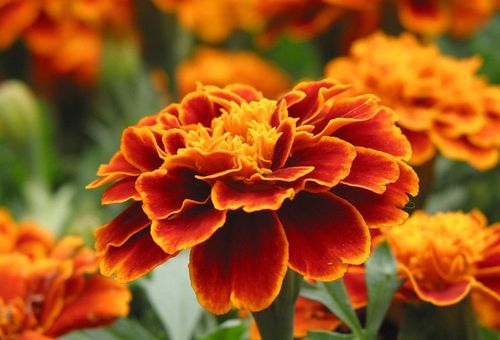
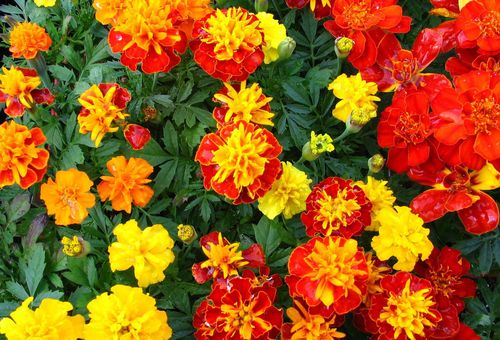
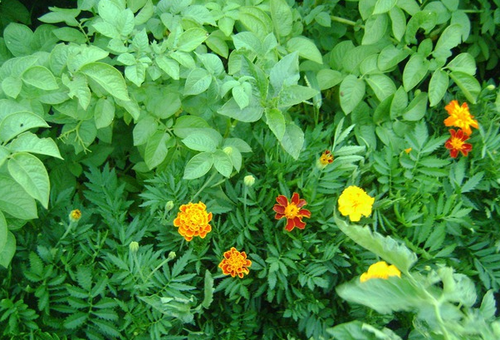

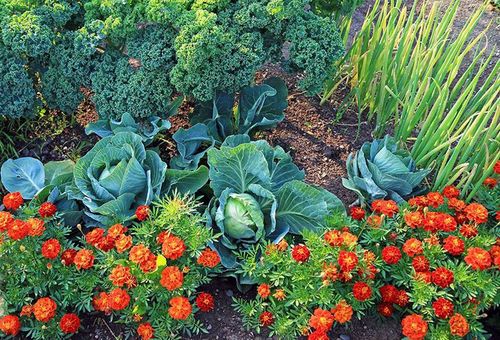
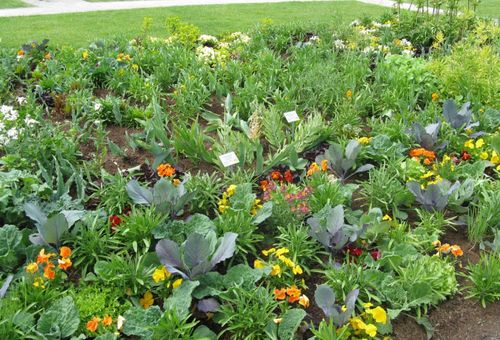
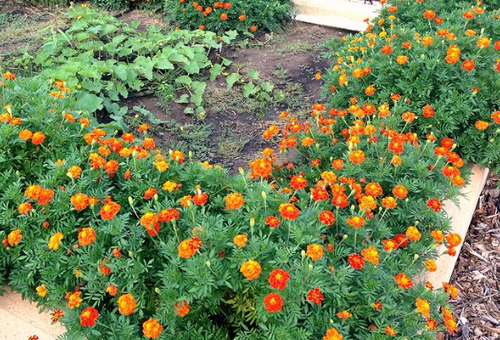
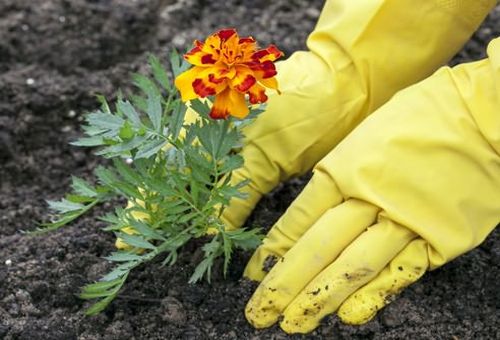
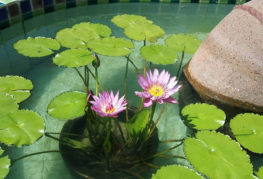
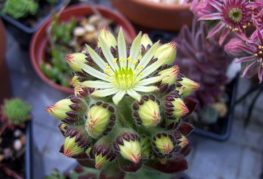
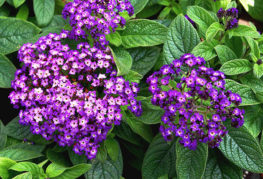


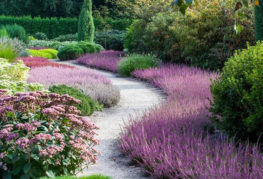
I disagree about kppusta. My last year's experience showed about the benefits of the neighborhood of marigolds for cabbage, and just like that: marigolds, dvp of cabbage, marigolds, i.e. 2 heads of cabbage between marigolds. And where there were no marigolds, the capuciu was eaten.